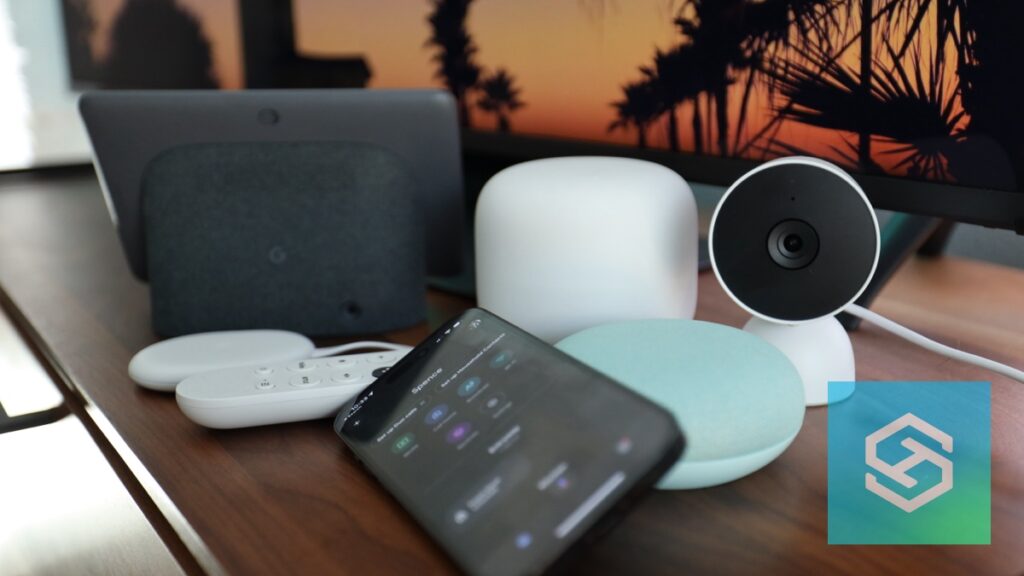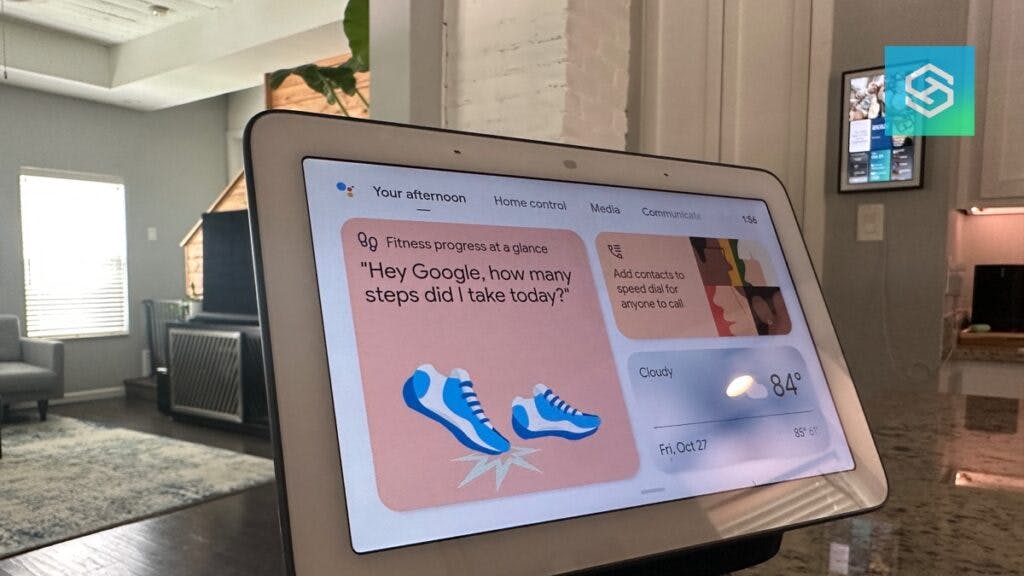Is Google Home Compatible with Zigbee?
By Trae Jacobs,
When you buy through our links, we may earn an affiliate commission.
If you own a Google Home, you know it communicates with devices like the WeMo smart plug via Wi-Fi. However, not all smart devices are Wi-Fi-compatible.
This may leave you wondering what works with what. Zigbee, Z-Wave, IFTTT? All these terminologies can get really confusing.
Certain brands like Philips Hue use the Zigbee protocol to communicate. Google Home does not speak Zigbee lingo, so you need a middleman, like a Hue Bridge or SmartThings hub. What about the “Google Home Hub”? How exactly does a Hub work, and do you need one?
How Google Home Can Work with Zigbee Devices
Google Home is not directly compatible with Zigbee devices.
But there is a way around this by enabling Google Home to communicate indirectly with smart devices. This is where a Hub comes in. It serves as a middleman, making it so a Zigbee device works with Google Home.
The Different Ways That Smart Devices Communicate With Each Other
First, we should cover the different ways devices can communicate:
- Bluetooth
- WiFi
- Zigbee
- Z-Wave
These are the four most common protocols or languages smart devices use to communicate with each other.
Here are some popular smart devices and the way they communicate.
| Device | Communication |
| WeMo Smart Plug | WiFi |
| Smartphone | Bluetooth and WiFi |
| Router | WiFi |
| Philips Hue Bulb | Zigbee |
Do you see the problem?
Bridging the Communication Gap
In the above example, Philips Hue Bulb doesn’t have a translator. Thankfully, the Philips Hue Bridge can “bridge” this gap and enable Philips bulbs to communicate with your router and phone. This option is expensive, so it may be best to get a starter pack with the Bridge included.
The better (and cheaper) alternative is to get a SmartThings 3 Hub. This is Internet/WiFi, Zigbee, and Z-wave compatible. Just my 2 cents, though.
Here’s an example of how a smart hub can bridge the communication gap:
- WeMo Smart Plug → WiFi
- Smart Phone → WiFi/Bluetooth
- Router → WiFi
- SmartThings Hub → WiFi/Zigbee/Z-Wave or Philips Hue Bridge → WiFi/Zigbee
- Philips Hue Bulb → Zigbee
Your phone can now communicate with a Philips Hue Bulb. Chances are, if you only need to communicate (via WiFi) to smart plugs and bulbs, you can get by without a hub. Make sure by looking at each product’s specifications, particularly how they communicate.
One thing to keep in mind is network congestion. You can easily clog up your router by connecting eight smart bulbs individually. A hub is handy because it can efficiently manage all eight bulbs through one connection.
What Google Home Can Do on Its Own

Don’t go running to buy a Hub quite yet. Google Home can more than hold its own regarding smart home automation.
Google Home and Google Home Mini Capabilities:
- Responds to voice controls
- Access to smartphone apps
- Setting reminders, calendar events, checking the weather
- Playing music
- Controlling other smart devices
The Google Home Smart Speaker and Google Home Mini devices work without a hub. They can control devices in the home while providing the user with a broad range of voice assistant features.
Here are a few examples of Google-compatible devices:
These devices respond well to normal voice commands and can:
- Answer questions
- Complete tasks such as setting reminders
- Check the weather
Smart devices touting “Works with Alexa” or “Works with Google Assistant” number in the thousands. With such an expansive universe of compatible devices revolving around them, Google and Alexa are major players in smart home automation.
Should You Get a Hub?
Do you need a hub for Google Home?- It depends on what devices you want compatibility with.
As noted earlier, Google (and Alexa) work with a ton of devices. They are recognizable brands and trusted by consumers.
Do you have any products from this list of devices compatible with the SmartThings hub?
- Ring Video Doorbell
- Ecobee Thermostat
- Arlo Lighting
- Aladdin Garage Door
- First Alert Smoke Detector
- and much more
It may be worth investing in a hub for broader device compatibility and to communicate with certain protocols like Zigbee or Z-Wave.
Even a Ring alarm base station, which works with Z-Wave, can communicate with other non-Ring devices that are also Z-Wave enabled.
What Can the Google Home Hub Do?
What about the Google Home Hub? Well, in some ways, it’s not a hub at all. So, we’ll call it a ‘Basic’ hub for our purposes.
A hub connects multiple devices to one another. Devices are connected to the hub but not physically to each other. For example, a hub can connect a printer, a laptop, or two computers. Hubs are an effective way to share information and resources.
A Google smart speaker can act as a smart hub. But Google also offers its Google Home Hub, a smart center for centralizing device controls. The Google Home Hub lets you access and control linked devices from one smartphone app.
Google Home Hub Features:
- Get step-by-step instructions
- Update calendar and reminders
- Display photos
- Control household devices (lights, locks, etc.)
- Located devices that are connected to Google Home
- Organize appliances and devices by room
- Parental Controls
Unlike a Google Home smart speaker, the Google Home Hub offers a multitude of unique features right at your fingertips. Instead of a compact, circular device, the Hub features an interactive screen with highly visible, user-friendly controls.
So Why Is Google Home Hub so Basic?
Well, it can’t speak Zigbee or Z-wave at all. For example, you still need the Hue Bridge to speak to your Philips Hue bulb. It only lets you access those smart devices and control them centrally from the Google Home Hub.
You still can’t get it to talk with your Ring video doorbell without a bridging device in between. Other smart devices like a Philips Hue Motion Sensor can connect directly with Google Home, but the voice commands are limited.
How To Set Up a Google Home Hub
If you own a Google Home Hub for its digital photo album or other features, we got you covered.
Summary of Set-Up Instructions:
- Find a suitable location for the device
- Download the Google Home app on your mobile device
- Plug in your Google Home Hub
- Select Add a New Device from the Google Hub
- Connect your device
- Set preferences (location, password, voice controls)
Location, Location, Location
One of the most important decisions when setting up your Google Home Hub is figuring out where you will place it in your home.
You should choose a location where the device will be used the most. The kitchen, bedroom, and home office are some of the best places to set it up.
The Google Home App

Next, you will need to download the Google Home app. This app is a free download for Android and iOS devices. You cannot effectively set up your Hub without this software.
Once installed, the Google Home App will give you a brief tutorial walking you through setup. This includes plugging your Google Home device into a power source and connecting it to your home Wi-Fi network.
Select Add from the Google Home Hub screen, then Set Up New Devices In Your Home. The app will automatically scan the area for available devices, and you can choose the correct one.
Set Up Preferences
Next, you will set up a variety of preferences, including:
- Which room the Google Home Hub will be located in
- Setting the administrative password
- Programming voice match preferences
The voice matching feature allows you to set up one or multiple voice profiles. The Hub will learn each individual’s voice and create customized responses to their commands.
For example, if one person asks Google Hub what their morning schedule looks like, the personalized answer they receive will be different than if another person asks the exact same question.
What Hubs Are Compatible With Zigbee?
If you plan to have multiple Zigbee devices throughout your smart home, investing in a Zigbee hub may be wise. Some hubs can communicate with Zigbee or Z-Wave protocols. Here is a sampling:
Related Questions
Can Google Home Hub always recognize multiple different voices?
Yes. The Google Home Hub can recognize multiple voices and provide personalized responses to each individual. Be aware, however, that the voice recognition feature is not perfect. It is not far-fetched for Google Home to mistake somebody else’s voice for your own.
Can you make calls between Google Home devices?
Google Home allows you to call anyone in your contacts across various devices. The limitation is that Google calls to actual phones, not the Google Home device itself. There is no way to initiate a call between two Google Home products.
What other devices are compatible with the Google Home Hub?
The Google Home Hub can interact with and control:
- Amazon Alexa
- Apple
- Nest
- Philips Hue
- Samsung products and appliances
In addition, the technology can be used in conjunction with Belkin WeMo, Samsung SmartThings, and Wink. Google Home is compatible with just about any smart home device in production.
Is Google Home compatible with Z-Wave?
No, Google Home is not compatible with Z-wave devices. A Hub would be needed for communication between these two protocols.
Related Articles

